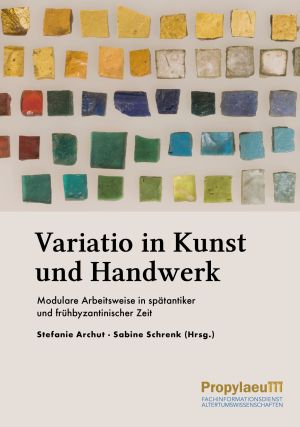
How to Cite
License

This work is licensed under a Creative Commons Attribution-ShareAlike 4.0 International License.
Published
Variatio in Kunst und Handwerk
Modulare Arbeitsweisen in spätantiker und frühbyzantinischer Zeit
In the arts and crafts of the first millennium AD work was carried out in some extent with prefabrications and templates; one experimented with motifs. The workshops assembled individual parts "as if from a construction kit", sometimes according to a strict design, sometimes in a playful manner. The present contributions are the first to examine this "modular way of working" and the various aspects it influences in a comprehensive way and thus make evident: modular working is proving to be an essential motor for cultural development. These are the results of a project carried out mainly by students and doctoral candidates with funding from the VolkswagenStiftung in the research and teaching project of "Poolforschung" at the Department of Christian Archaeology at the Rheinische Friedrich-Wilhelms-Universität Bonn.






